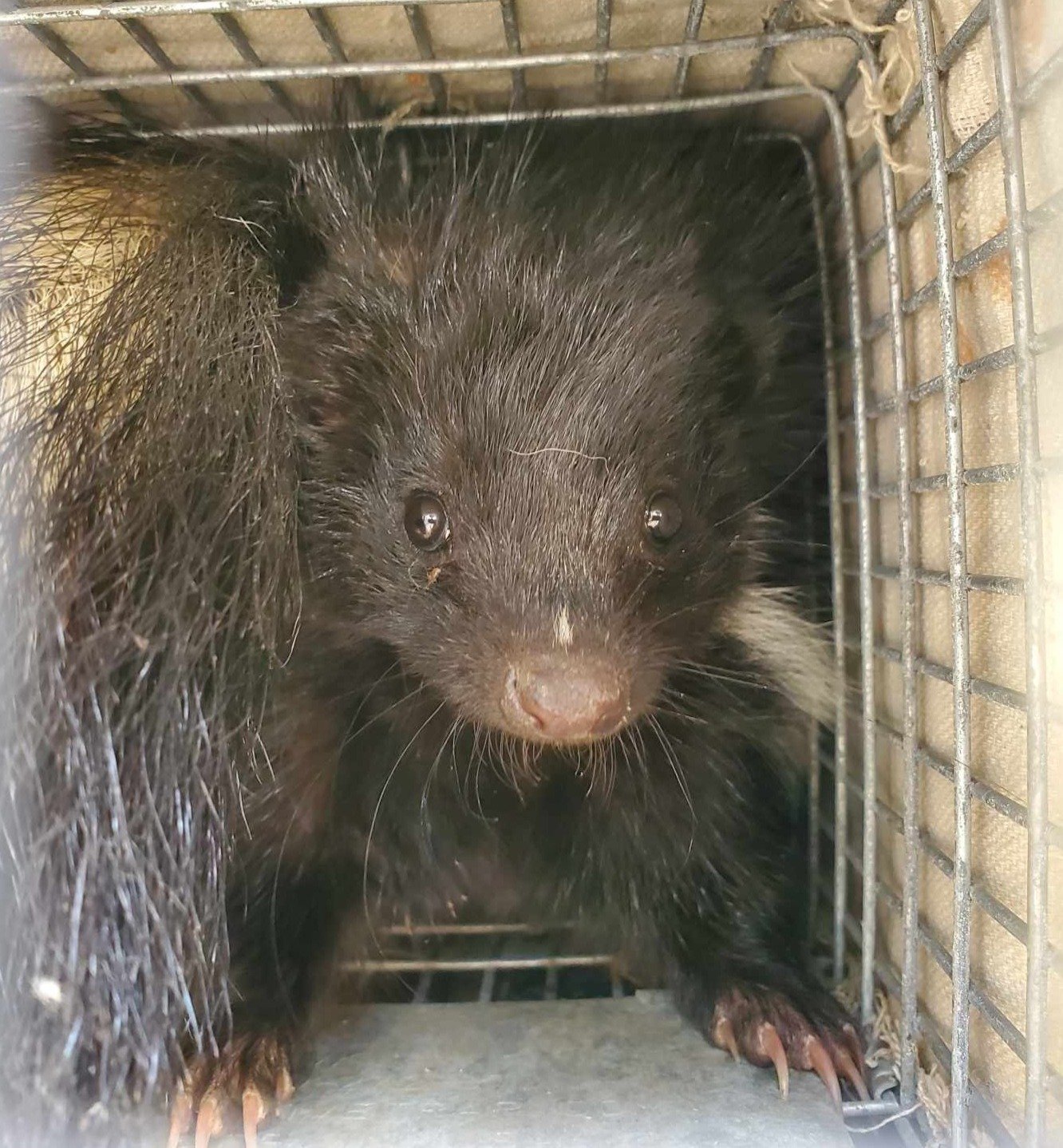Furbearing Wildlife Expanded Information
Rock Squirrels
Live-cage trapping only. Relocated >5mi from capture location in suitable habitat where they won’t become someone else’s problem.
Whether they’re digging under your shed or have made a home in your roof, rock squirrels are live trapping and removal only. One-way door and sealing them out can be effective on roofs, however that squirrel will still want back inside somehow. Squirrel trapping is straightforward, and they are generally food motivated.
In the yard, an inspection and a chat with the homeowner go a long way. We need to estimate the number of squirrels, and place traps accordingly (minimum 2 traps for 1 squirrel). The traps have ~24hrs of food and are checked daily, peak summer we may ask homeowners to do an extra check for us.
Once the squirrels have been relocated, their burrows can be filled in and enzymes sprayed around the area of the burrow to discourage future squirrels.
In the roof, an inspection will determine where the squirrels are entering the roof and allow us to give an estimate to the homeowner. The squirrels are then trapped until the homeowner is no longer hearing them, and the traps are coming up empty.
The roof can then be sealed/excluded from future squirrel inhabitation. SWS will either do the exclusion with our contractor’s license or will recommend the appropriate roofer/handyman/etc if it is beyond our license to repair.
Skunks
Live trapping only, relocated to suitable habitat >20mi away.
Skunks like to dig under our sheds, live in the backs of barns, rip up our gardens for grubs, and are common visitors to outdoor cat feeding areas. This generally means that our smelly friends are live trapped and relocated.
SWS’ licensed contractor can repair vents and crawlspace entrances and secure buildings after the skunks are relocated.
*Bobcat*
Bobcats are not currently on our permit and as such we cannot trap them. We are actively working to remedy this with G&F and will update as soon as possible.
A young raccoon using a one-way door to remove itself from the attic.
Raccoons
Live-cage trapping, eviction, one-way doors only. Trapped raccoons are relocated >20mi from capture location.
Raccoons are smart and can only be trapped once generally. So quality habitat far away from humans is found for them. Raccoons have thumbs and the brains of a toddler. This means that they can get into all sorts of shenanigans. Common occurrences will be listed here.
In the roof, an inspection will show where and how the raccoons are gaining entry. Spring is baby season for raccoons and homeowners might hear the babies chittering cries echoing around the house at night.
If babies are present we will try to evict the family. This uses various methods to make the mother uncomfortable and to fear for the safety of her kids. The mother then moves the children out of the roof themselves to a new “safe” location, and we can seal up the entrances once they’re confirmed to have left. A camera is used to watch the entrance and confirm the mother has moved the kids out.
If NO babies are present, and it’s a male raccoon, or not breeding season, we can use one-way doors. This allows the animal to leave, but not come back inside, forcing them to find a new home.
Some situations require us to actually trap the raccoons, and that will be discussed at the inspection.
Entrances are sealed by a licensed contractor once the raccoons are removed. SWS can handle most exclusion work, but you will be notified if it’s something beyond our license to repair during the inspection.
Raccoons tearing up the yard/garden, defecating on the top step of swimming pools, and becoming too bold because of outdoor cat feeding are all cause for live-trapping and relocating raccoons far far away from humans.



